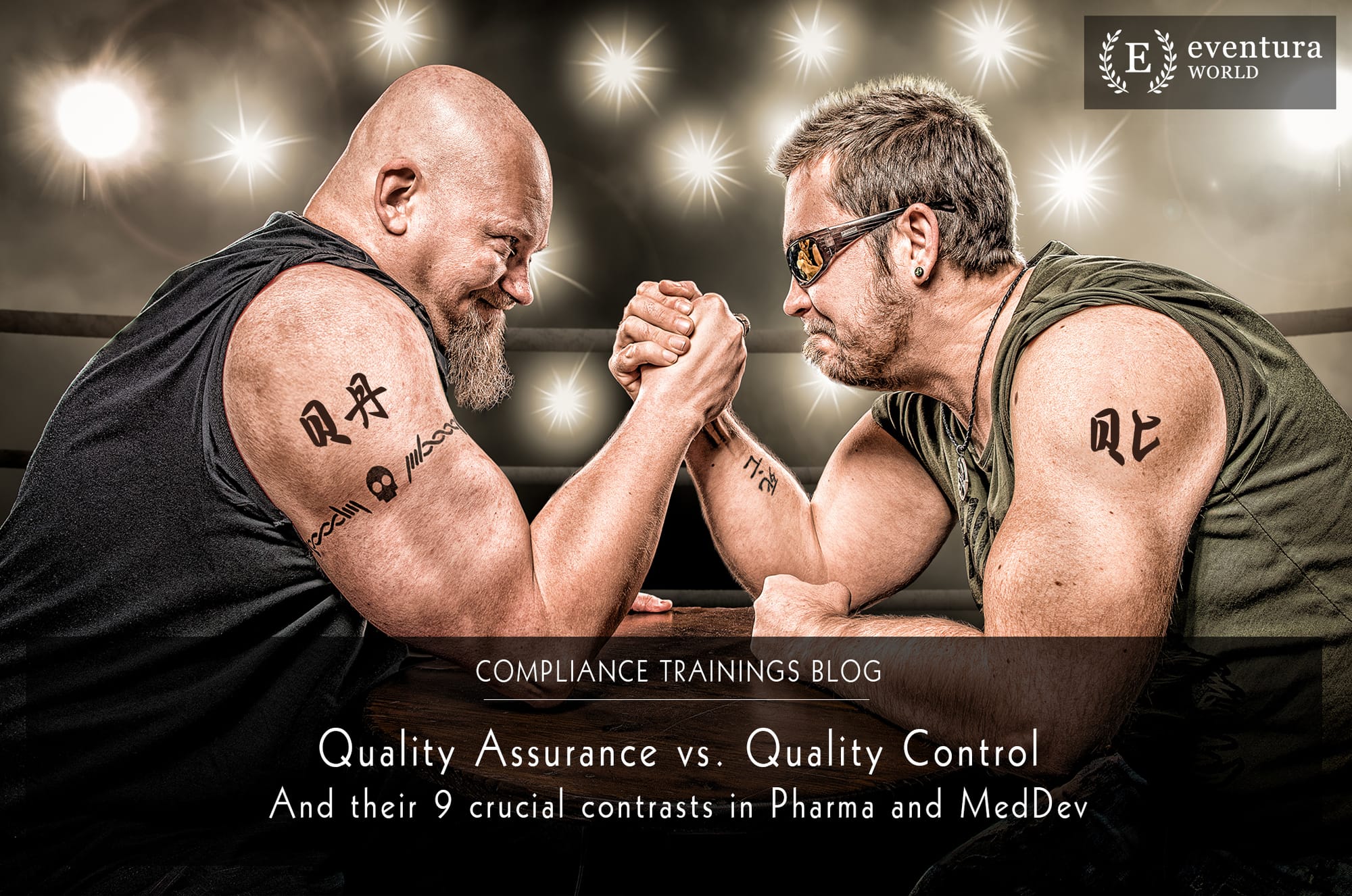Quality Assurance (QA) vs. Quality Control (QC): Understanding their 9 Crucial Contrasts in Pharmaceuticals and Medical Devices

In the highly regulated pharmaceuticals and medical device industries, maintaining quality standards is critical for ensuring patient safety and compliance with regulatory requirements. Quality Control (QC) and Quality Assurance (QA) are two essential components of a comprehensive quality system. While they share a common goal, there are significant differences between QC and QA that professionals in these industries must understand. In this comprehensive guide, we will explore the concept of quality in regulated industries, define QA and QC, discuss their interrelationship, and delve into the nine most important differences between the two. So, let's dive in!
What is Quality in Regulated Industries?
Quality in regulated industries refers to the degree to which a product or process meets predefined standards and regulatory requirements. In pharmaceuticals and medical device industries, the quality of products is of utmost importance to ensure their safety, efficacy, and reliability. The regulatory bodies, such as the FDA and EMA, set guidelines and standards that companies must adhere to in order to maintain and demonstrate quality throughout their operations.
Understanding the Quality System
A quality system is a comprehensive framework of processes, procedures, and practices implemented by an organization to ensure consistent adherence to quality standards. It encompasses all aspects of a company's operations and focuses on maintaining and improving quality throughout the product lifecycle. A well-designed quality system ensures that products are developed, manufactured, and distributed in compliance with regulatory requirements, resulting in safe and effective products for patients.
Quality Assurance (QA): QA encompasses all activities and processes undertaken to ensure that products meet the required quality standards. It is a proactive approach that focuses on preventing defects and ensuring compliance throughout the product development and manufacturing processes. QA professionals establish and maintain quality systems, conduct audits, and implement corrective and preventive actions to improve overall quality. | Quality Control (QC): QC involves the set of activities and techniques used to monitor, inspect, and evaluate the quality of products or processes. It is a reactive approach that primarily focuses on detecting and addressing deviations or defects in the final product. QC personnel perform inspections, tests, and measurements to verify compliance with predefined quality criteria. |
The Relationship between QA and QC:
QA and QC are closely related but distinct components of the quality system. While QA focuses on preventive measures and overall compliance, QC is concerned with detecting and addressing defects in the final product. Both QA and QC play crucial roles in ensuring product quality, but their approaches and responsibilities differ.
The 9 Most Important Differences between QA and QC
1. Definition and Focus QC involves monitoring and evaluating the quality of products or processes. QA encompasses the entire process of planning, implementing, and monitoring activities to ensure compliance with regulatory requirements and predefined quality standards. | ||
2. Timing QC is performed during or after the manufacturing process. QA starts early in the product development lifecycle and continues throughout manufacturing. | ||
3. Objective QC aims to identify and rectify defects in the final product. QA aims to prevent defects by implementing robust processes and systems. | ||
4. Role and Responsibilities QC personnel conduct inspections, tests, and measurements on products or samples. QA professionals establish quality systems, conduct audits, and oversee compliance. | ||
5. Compliance and Regulation QC focuses on internal quality standards and may not be directly involved in regulatory matters. QA ensures compliance with industry regulations, guidelines, and standards. | ||
6. Process Orientation QC focuses on inspecting and evaluating finished products. QA focuses on improving and optimizing processes to enhance overall quality. | ||
7. Scope and Continuous Improvement QC is concerned with the inspection of finished products and does not typically contribute directly to process improvement. QA encompasses a wider scope and is dedicated to continuous improvement and optimization. | ||
8. Integration and Collaboration QC works closely with production personnel to identify and address quality issues. QA collaborates with various departments to establish and maintain quality systems. | ||
9. Documentation and Record-Keeping QC generates records and reports related to product inspections and tests. QA maintains documentation related to quality systems, audits, and compliance activities. |
Continual Improvement in Quality
A successful quality culture in the pharmaceutical industry relies on continuous learning and implementation of changes to the quality framework. The quality system should embrace scientific knowledge, risk assessment, identification, and remediation of process weaknesses. Robust and updated processes should be in place to generate products of unparalleled quality. Total Quality Management (TQM) is an evolving concept that emphasizes an integrated quality system with a multidimensional approach, focusing on customer and employee satisfaction, waste reduction, and fostering an integrated working culture.
Conclusion
Quality Control and Quality Assurance are crucial components of the pharmaceutical and medical device industries' quality system. While QC focuses on identifying defects in the final product, QA takes a holistic approach by implementing preventive measures and continuous improvement strategies. Understanding the differences between QA and QC is essential for professionals in these industries to establish robust quality management practices, ensure compliance, and deliver safe and effective products to patients worldwide. By upholding the highest standards of quality, these industries continue to make significant contributions to healthcare and patient well-being.
Remember, maintaining quality is not just a regulatory requirement but a commitment to patient safety and welfare. So, embrace quality control and quality assurance as the cornerstones of your organization's success in the pharmaceutical and medical device industries!
.